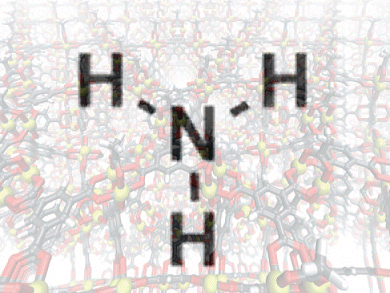Materials for chemical sensing applications need to have low detection limits and high selectivity. Microporous metal–organic frameworks (MOFs) can be altered to detect specific analytes and they can have a high density of binding sites, thus showing potential as sensing materials. Previously developed MOF sensors work by quenching luminescence, which is a “turn-off” mechanism and are generally not very selective.
Mircea Dincă and colleagues, Massachusetts Institute of Technology (MIT), Cambridge, USA, have developed MOFs, Zn2(TCPE) and Mg(H2DHBDC) (TCPE = tetrakis(4-carboxyphenyl)ethylene and H2DHBDC2−= 2,5-dihydroxybenzene-1,4-dicarboxylate), that detect ammonia through a luminescence “turn-on” mechanism. These MOFs are luminescent at high temperatures, unlike molecular-crystal or flexible-polymer sensing materials, which are no longer fluorescent at their melting or glass transition temperature. This property is thought to be due to the rigidity of the MOFs.
The MOFs were used to selectively detect ammonia in the presence of water, methanol, larger amines, and other gases and the sensing response was shown to be reversible.
Thus, the team demonstrated a reversible and selective sensor for ammonia, an important environmental pollutant.
- Selective Turn-On Ammonia Sensing Enabled by High-Temperature Fluorescence in Metal–Organic Frameworks with Open Metal Sites,
Natalia B. Shustova, Anthony F. Cozzolino, Sebastian Reineke, Marc Baldo, Mircea Dincă,
J. Am. Chem. Soc. 2013.
DOI: 10.1021/ja407778a


